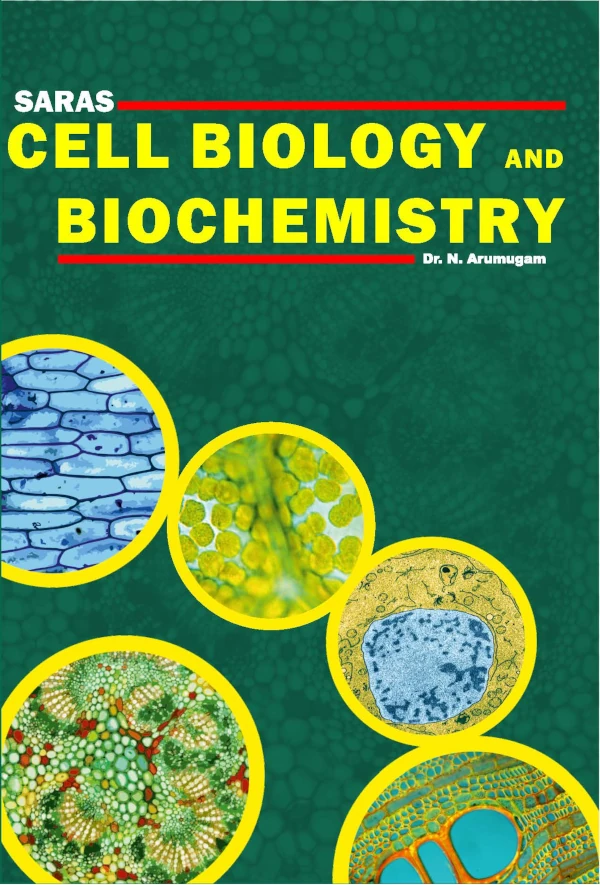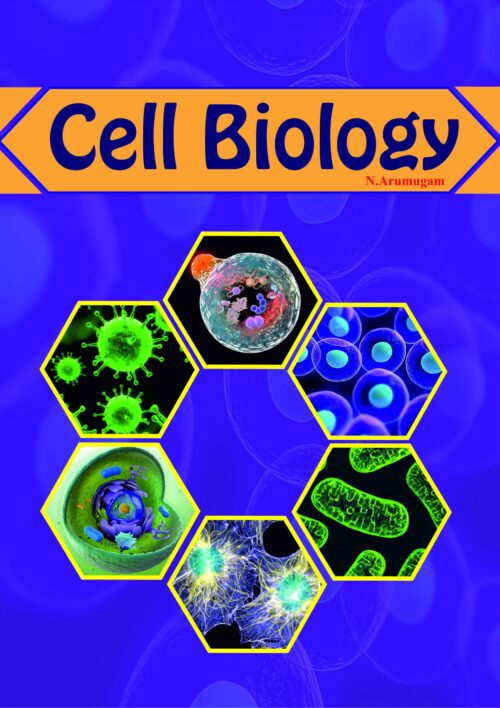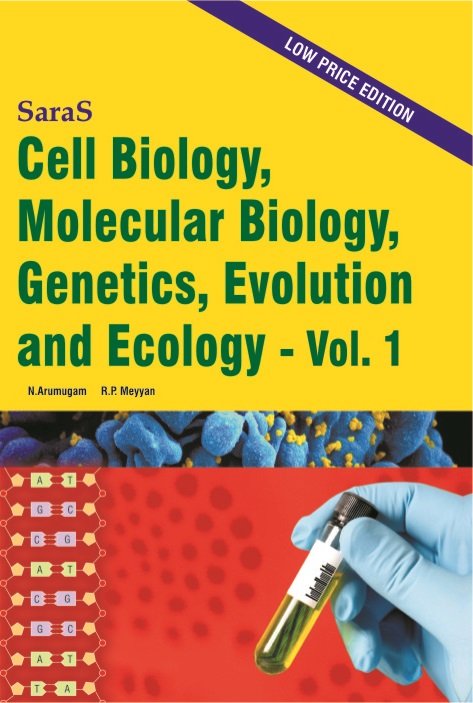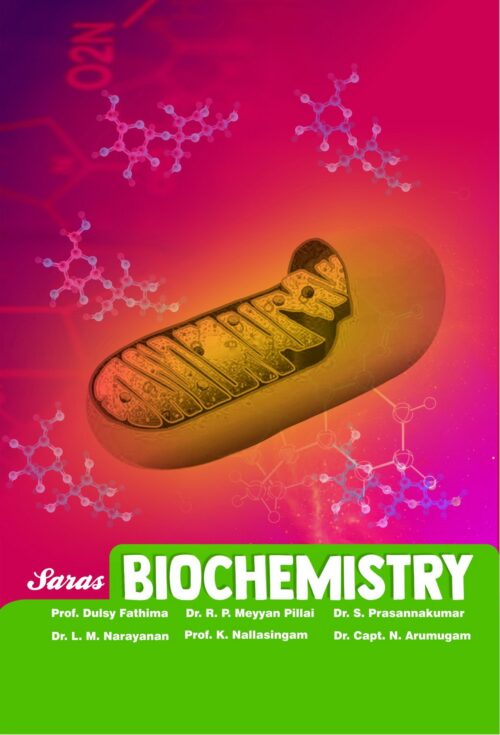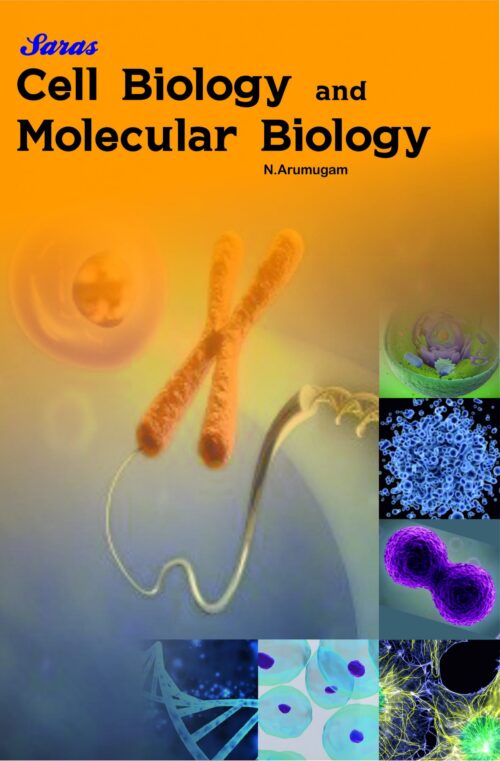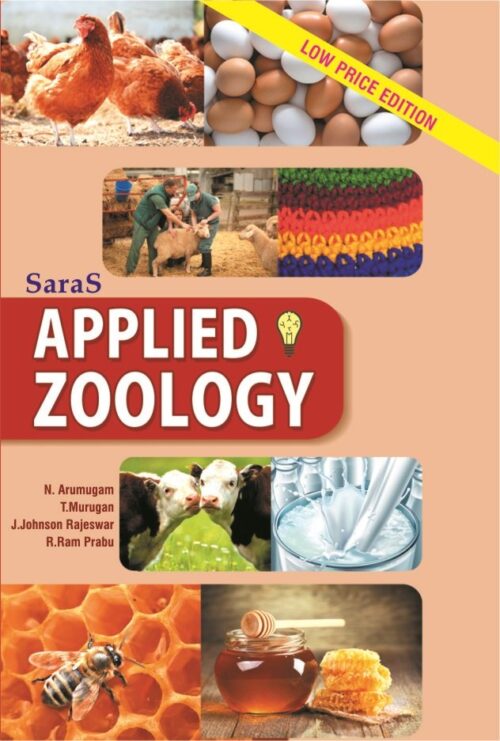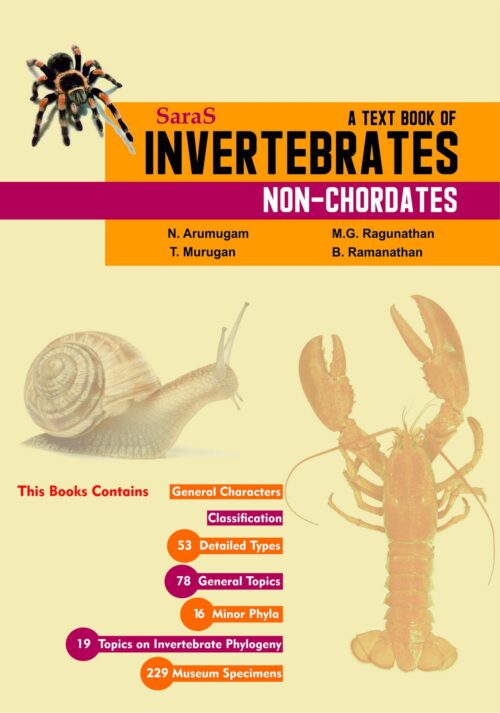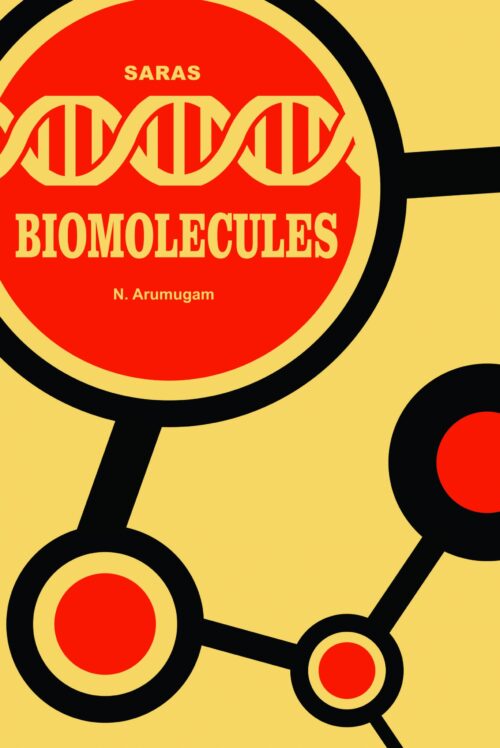Description
Contents
Cell Biology
1. Introduction to Cell Biology 1-2
2. Scope of Cell Biology in Modern Perspective 2-3
3. Cell Theory 3-4
4. Types of Cells 5-5
5. Prokaryotic Cells 6-7
6. Eukaryotic Cells 8-9
7. Prokaryotic V/S Eukaryotic Cells 10-10
8. Cytological Techniques 11-13
9. Fixation 14-16
10. Fixatives 17-18
11. Sectioning 18-19
12. Staining 20-22
13. Microscopy 23-24
14. Compound Microscope 24-27
15. Phase Contrast Microscope 28-33
16. Electron Microscope 33-37
17. Electron Microscope V/S Light Microscope 38-38
18. Transmission Electron Microscope (TEM) 39-44
19. Scanning Electron Microscope (SEM) 44-48
20. The Cell 48-64
21. Cell Organelles 65-66
22. Plasma Membrane 67-69
23. Models of Plasma Membrane 70-75
24. Chemical Composition of Plasma Membrane 75-76
25. Physical Properties of Plasma Membrane 77-77
26. Microvilli 78-79
27. Desmosomes 79-81
28. Gap junction (Nexus) 81-82
29. Tight Junction 82-83
30. Interdigitations 83-83
31. Basalin foldings 84-84
32. Plasmodesmata 84-85
33. Cell Junctions 86-86
34.Occluding Junctions 86-87
35. Anchoring Junctions 87-88
36. Ion Channels 89-93
37. Origin of Plasma Membrane 93-94
38. Functions of Plasma Membrane 94-99
39.EndoplasmicReticulum 100-110
40. Golgi Complex (Golgi Apparatus) 111-123
41. Lysosomes 124-134
42. Centrosome 135-137
43. Ribosomes 138-149
44. Mitochondria 150-156
45. Origin of Mitochondria 157-158
46. Functions of Mitochondria 158-162
47. Glycolysis 162-166
48. Krebs’ Cycle 166-169
49. Electron Transport System or Respiratory Chain 169-175
50. Nucleus 176-186
51. Nucleolus 187-191
52. Chromosomes 192-200
53. Chromatin 201-201
54. Nucleosome 202-203
55. Lamp brush Chromosomes 204-205
56. Polytene Chromosomes 205-208
57. Nucleic Acids 209-210
58. Deoxyribonucleic Acid (DNA) 211-219
59. Components of DNA (Chemical Composition of DNA) 219-223
60. DNA Replication 224-225
61. Types of DNA Replication 225-226
62. DNA Replication in Prokaryotes 227-230
63. DNA Replication in Eukaryotes 231-234
64. Models of DNA Replication 235-239
65. Ribonucleic Acid (RNA) 240-241
66. Messenger RNA (mRNA) 241-244
67. Transfer RNA (tRNA) (Soluble RNA) 244-246
68. Ribosomal RNA (rRNA) 247-248
69. DNA vs RNA 249-249
70. Genetic Code 250-255
71. Codon 256-258
72. Anticodon 259-264
73. Protein Synthesis 264-273
74. Transcription 274-275
75. Translation 275-282
76. Post Translation Processing 283-283
77. Shine – Dalgarno Sequence 284-284
78. Prokaryotic protein synthesis V/S Eukaryotic protein synthesis 284-286
79. Cell Cycle 287-292
80.CellDivision 293-293
81. Mitosis 294-301
82. Meiosis 302-308
83. Synaptonemal Complex 309-311
84. Gene Mutations 312-322
85. Cancer 323-331
86. Oncogenesis 332-337
87. Oncogenes 337-339
88. Cancer Treatment 339-340
89. Apoptosis 340-341
Biochemistry
1. Introduction to Biochemistry 342-344
2. Carbohydrates 345-345
3. Classification of Carbohydrates 346-348
4. Monosaccharides 349-355
5. Glucose 355-361
6. Fructose 362-366
7. Oligosaccharides 367-369
8. Sucrose 369-372
9. Polysaccharides 372-374
10. Glycogen 374-377
11. Proteins 377-377
12. Classification of Proteins 378-382
13. Albumins 382-383
14. Glycoproteins 384-386
15. Amino Acids 387-391
16. Essential Amino Acids 392-393
17. Non-essential Amino Acids 393-395
18. Lipids 396-396
19. Classification of Lipids 397-398
20. Fats 399-401
21. Oils 401-402
22. Waxes 403-404
23. Steroids 405-407
24. Lecithins 407-409
25. Cephalins 409-410
26. Glycolipids 411-412
27. Cholesterol 412-414
28. Prostaglandins 414-421
29. Enzymes 422-422
30. Nomenclature of Enzymes 422-424
31. Classification of Enzymes 425-427
32. Properties of Enzymes 428-430
33. Mechanism of Enzyme Action 430-435
34. Enzyme Inhibition 435-439
35. Metabolism 439-442
36. Glycogenesis 442-444
37. Glycogenolysis 444-445
38. Gluconeogenesis 445-448
39. The Hexose Monophosphate (HMP) Shunt 449-455
40. Deamination 455-458
41. Transamination 458-459
42. β – Oxidation 460-468


